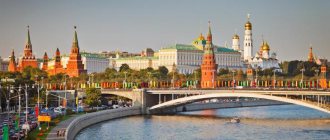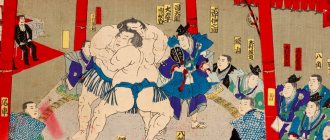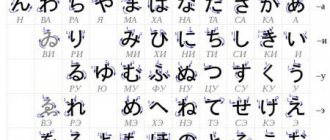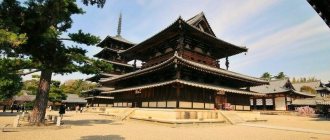Samurai.
Samurai were expected to lead their lives according to the ethical code of bushido ("way of the warrior"). Strictly Confucian in nature, Bushido emphasized concepts such as loyalty to one's master, self-discipline, and respectful, ethical behavior. Many samurai were also drawn to the teachings and practice of Zen Buddhism.
SAMURAI: HISTORY, AESTHETICS AND LIFESTYLE
Feared and respected, the samurai warrior has been known for centuries as an elite soldier and master of Japanese martial arts. This is a warrior who does not shy away from anything and protects his shogun (military leader or daimyo) without sparing his life. By giving his life to the general, the samurai follows the path of the sword, also called bushido. Bushido is a strict code in which loyalty and respect are of paramount importance. The samurai was depicted in books and art early in Japanese history and can be compared to the elite units of the army.
Modern Samurai
The term "samurai" officially comes from pre-industrial Japan (between 1000 and 1900) and literally means "one who serves" or a warrior who follows the bushido code to serve his shogun.
The samurai is a master in fighting with the sword. With the help of his katana (daito, long sword), he strives through bushido to achieve one ultimate goal in his life, to die in battle.
Renegades
Some samurai preferred to live not exactly according to the code, which ascribed suicide to the samurai in the event of disgrace or death of the lord.
Miners began making farms from gaming laptops: up to $70 thousand in profit per year
Meghan Markle is expecting her second child. There will be a new addition to the prince's family
The star of “Univer” spoke about the trial with producer Viktor Drobysh
If a samurai did not serve anyone for any reason, he was known as a ronin, or "wandering man." By choosing the path of ronin, the samurai became outside the code and had to avoid other samurai who threatened him with the death penalty. They often became mercenaries.
Origin of the Samurai
The first mention of the samurai class in the Japanese army appears in the Heian period, between 794 and 1185. Hence the term “samurai” became defined as a true, legendary warrior. The samurai is inextricably linked with the imperial families and shoguns whom he protected. This is why these elite Japanese warriors were often seen as special bodyguards who were always close to their powerful masters. Around the same time, warriors were increasingly hired by wealthy landowners, who became independent of the central government and built armies for their own defense.
The two most powerful of these landowning clans, the Minamoto and the Taira, eventually defied the central government and fought each other for supremacy over the entire country. Minamoto Yoritomo emerged victorious and created a new military government in 1192, headed by a shogun , or supreme military commander. The samurai would rule Japan for most of the next 700 years.
20 best movies about samurai
Bodyguards and advisors
Hattori Hanzo is one of the most famous and influential samurai, famous for saving the life of the future great Tokugawa Shogun, who established the Shogunate.
One of the heirs of the ninja clan, Hattori, led his overlord through enemy territory and helped him unite Japan. After the establishment of the shogunate, Hattori was well rewarded and became a close advisor to the Tokugawa.
Antibodies to the rescue: one vaccine will be enough for those who have already recovered from COVID
In 2020, the demand for used cars in Russia broke all records
Mannequins were developed for 2.5 million rubles. for training medical personnel
Samurai life
Samurai protected the powerful and wealthy Japanese with their lives and their mastery of the Japanese katana sword. The samurai's complete dedication of life to his masters was also called the " way of the warrior" or "bushido". This meant that the warriors were inseparable from their sword and tried to "unite" with it in death, protecting their master.
The country was eventually reunified in the late 1500s, and a rigid social caste system was created during the Edo period, with samurai at the top, followed by farmers, artisans, and merchants respectively. During this time, samurai were forced to live in castle towns, they were the only ones allowed to own and carry swords, their daimyo or feudal lords paid their wages in rice. Masterless samurai were called ronin and caused significant problems during the 1600s.
The master of the “drunken” sword of the Oita school peed on the students.
They spent many hours a day practicing and perfecting martial arts. They spent months working on the perfect kata for their favorite way of fighting. In addition, the sword always had to be carried with you, because it was the soul of the samurai (and for safety in those difficult times). If he lost his katana, it was a great shame and often led to the commission of seppuku or hara-kiri, which literally means suicide by cutting open the abdomen. By committing seppuku, samurai demonstrated their courage in the face of pain and death and the purity of their thoughts before gods and people.
Many members of the Yakuza, bandits in Russian, still follow the path of Bushido.
Japanese warriors became increasingly famous during the unification of Japan by Emperor Kammu. Emperor Kammu used them to suppress civil uprisings in order to create a unified Japan. Over the years, samurai sword techniques have evolved and this skill is called Ken-jutsu, which is a part of Budo, also known as Japanese martial arts. Now this is, for example, jiu-jitsu and relatively modern karate and judo.
Mastery of martial arts was considered one of the pillars of the legendary status of the samurai, who mastered the technique of self-defense without weapons (jiu-jitsu). Other important aspects of understanding the harmony of life and the path of bushido were the improvement of calligraphy and ikebana (flower arranging). These forms of striving for excellence are still deeply woven into modern Japanese culture.
The fastest modern samurai is Isao Machii
Death by code
If a samurai was defeated and captured by the enemy, he had to commit ritual suicide - seppuku. The impossible was expected of the samurai - to rip open his own stomach. Special harakiri was expected from the samurai in the event of the death of his daimyo. This type of seppuku was known as tsuifuku.
Seppuku and tsuifuku were also used as a form of death penalty for those samurai who were caught dishonorably and captured before they could escape and choose the path of ronin. Often the execution was carried out in public in front of a large group of spectators.
Women from samurai families, especially those who were married to a samurai, were also required to commit suicide after the shame fell on their family. Seppuku was not expected of them, and women often preferred to simply cut their veins.
Samurai in power
Over the years, the samurai's power increased and even became so strong that after the Genpei War (1180-1185), they ruled Japan under the command of Minamoto no Yoritomo, a powerful samurai who became shogun. Around 1192, Seyi Taisōgun founded the Komakura shogunate, in which common samurai held power and ruled Japan.
Samurai were expected to always act with integrity, be literate, and be knowledgeable about the cultural aspects of society. In the 13th century, Zen Buddhism became a popular religion in Japan, as well as for samurai.
There is a myth that a samurai who had just received a brand new katana had the right to test it on the first person he met. The katana was no longer the only object that a Japanese warrior had to respect. For example, they were given numerous attributes of the samurai code, such as denying the fear of death or killing opponents. At the same time, they acquired the status of elite warriors and were highly skilled in martial arts and military strategy.
Many opponents feared them. They repelled the invasions of powerful Mongol warriors led by Genghis Khan several times, as well as the attacks of the Korean and Chinese emperors. The development of strategic warfare led by the samurai moved very quickly.
Samurai hairstyle
Did you know that Chonmage is a traditional Japanese hairstyle associated with the samurai? With this haircut, the head was shaved on top to easily wear a samurai helmet. The hairstyle eventually came to be seen as a status symbol. Nowadays you often see chonmage in sumo wrestlers.
During the chaotic era of warring states in the 15th and 16th centuries, Japan split into dozens of independent states constantly at war with each other. Consequently, warriors were in demand. This was also the era when ninjas, warriors who specialized in unconventional methods of warfare, were most active. Many of Kurosawa's famous samurai films take audiences back to this time.
Everything you know about ninjas is wrong!
Relative peace prevailed for about 250 years of the Edo period. During the Tokugawa Shogunate (1608-1863), the samurai gradually lost their military function. As a result, the importance of martial skills declined, and many samurai became bureaucratic officials, teachers, or artists. Katanas and other samurai swords were used only for ceremonial practices, because fighting someone with edged weapons was almost impossible. Japan's feudal era eventually ended. During the Meiji Restoration (1868–1889), an important period of political revolution in Japan, the samurai class was officially abolished and the carrying of the samurai sword was prohibited.
This was not without struggle, of course, and in 1877 there was the great rebellion of the Satsuma, the traditional samurai, against the modern government. Japanese warriors eventually gained more power in government, but the "way" of the traditional samurai was ended. Currently, Bushido is only a way of communicating with each other and weapons in Japanese martial arts. However, Bushido still lives on among many Japanese people, and samurai are still considered the most legendary warriors in Japan.
Japanese Katana sword
The ability to fight with a sword was one of the requirements and values of the samurai and their bushido. You could follow the path of the sword if you devoted yourself entirely to caring for the katana and mastering martial arts with it. The katana is a razor-sharp sword that is always cared for and perfected by samurai. So they practice with the sword every day.
Museum in Tokyo. Katanas
The katana, also called the daito, along with the wakizashi, and the tanto (dagger) were part of the worn armor of the feudal samurai in Japan. Katana literally means "long sword" and wakizashi literally means "short sword". Both have a narrow and long blade that has only one sharp edge. It is different from the ordinary European knight's sword, which was sharpened on both sides. The katana was much lighter than European swords, which allowed samurai to strike very quickly.
Knights and Samurai: Comparison of Feudal Structures in Japan and Europe
Katanas are still highly respected throughout Japan and can only be purchased if you have proven yourself capable of fighting with Japanese swords (Kenjutsu). Prices for these swords can reach hundreds of thousands of euros.
Famous films about samurai
Over the years, many beautiful films have been made about the fascinating lifestyle of Japanese warriors. We've compiled a list of the best samurai movies below. These films don't always give a completely realistic picture, but they do provide a deep insight into the lives and fighting styles of swordsmen. Plus they are just fun to watch!
- The Last Samurai
- Seven Samurai
- hara-kiri
- Bodyguard
- Sword of Destiny
- Throne of Blood
- Sanjuro
- Ran
- Rise of the Samurai
- Kagemusha
- Twilight Samurai
- When the last sword is drawn
- Zatoichi
- 13 killers
One of the five "Comet Swords" will be shown at the Toyama Science Museum











